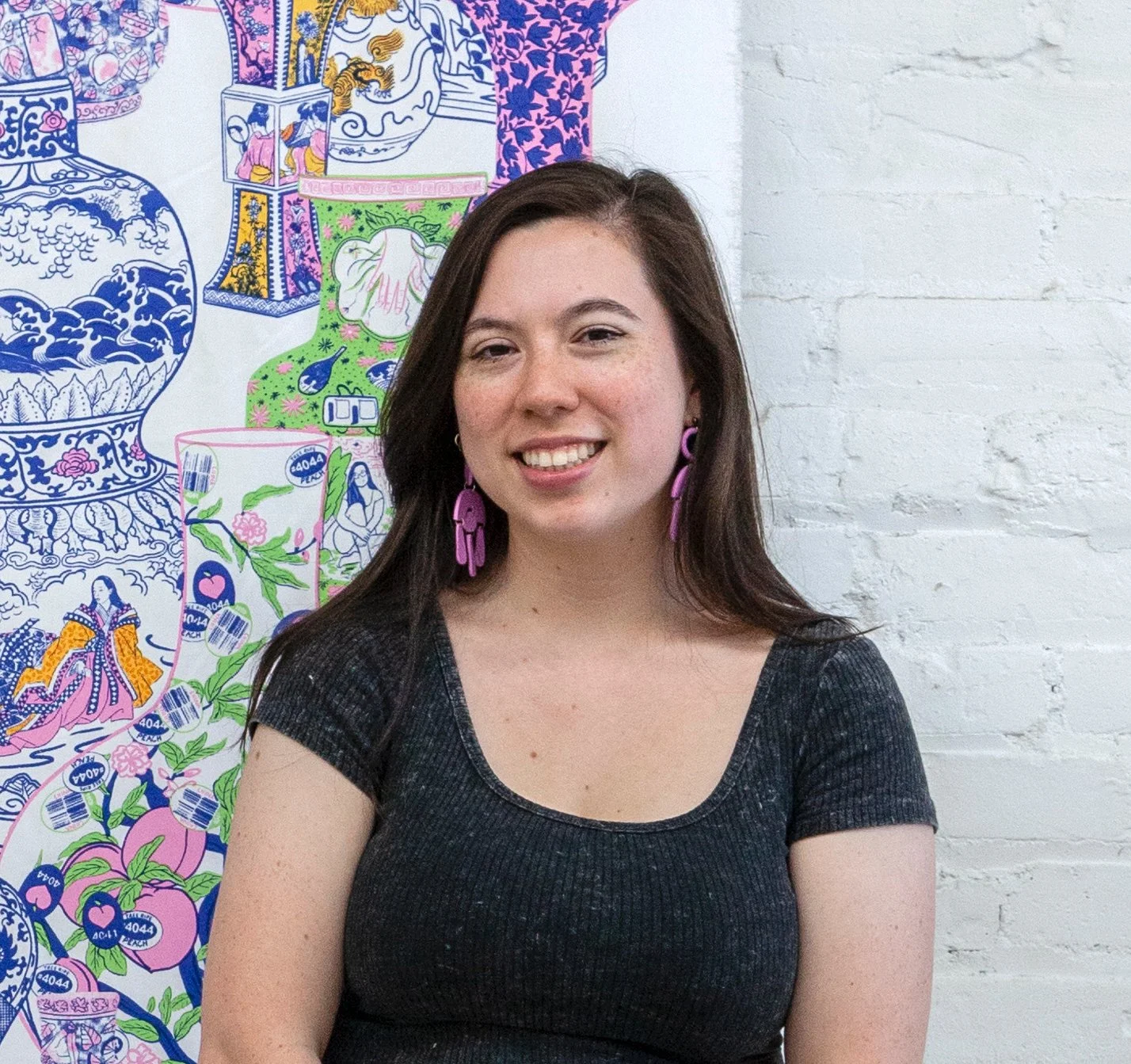dis(place)ment
Displacement. To be removed and replaced. Unwillingly. Forcibly.
National Juried Open Call Exhibition
Guest Curator: Peri Law
In art we can move beyond time and place to exist beyond our present being. The multiplicity of print reflects the multi-locatedness of diasporic experiences. Yet we exist within a system that tries to divide us with imaginary borders. Who has a right to claim a place as their own? Imperialism drives the search for new land to steal and, in response, the ongoing efforts to fight back grow. The idea for this exhibition came about through my involvement in the No Arena in Chinatown organizing and the ongoing genocide in Palestine, situations that the oppressors are trying reframe as necessary instead of blatant landgrabs for their own benefit. I aimed to highlight printmakers who can share their perspective on displacement, drawing from personal experiences and shared community power.
Some artists interrogated their personal experiences from displacement caused by settler colonialism. Yamani and Charging rely on quiet embossment to represent their declaration of their Nativeness. The materiality of “Invisible Identity” echoes Yamani’s experience having her Palestinian identity erased; the focus on correcting one system of oppression, gender, and thus neglecting the systematic erasure of Indigenous Palestine. “Meet Me in Elbowoods” changes the surface of the paper, forcing a reminder by pressing a Native presence into the fabric of the paper and in turn, into American history, regardless of whether that history is told by the oppressors. In “to (x160)”, Gosnell tenderly represents the inner turmoil that occurs when one part of your history is the cause of the displacement of the other. The softness and intricacy of the cyanotype is sharply contrasted to the diagram of the military plane depicted; how can they reconcile these two forces, with one complicit in the violence that forced the other to be a refugee?
Other artists in the exhibition explore how our overconsumption has caused our own displacement, particularly through environmental degradation. “The Last Times on Dogwater Beach '' explores this through solastalgia, an existential distress that is caused by negative environmental change, capturing the continued exuberance occurring as the beaches from his childhood are rapidly degrading from our actions. The scale of the print speaks to the overwhelm, how out of control the environmental crisis is and the global displacement will be as we continue to party on in the face of it. Lahah’s work connects to the global trend of deforestation as a result of our consumption. Our lives are so tied to work in order to create and to then consume, to the point that nothing will remain. We will displace ourselves.
This exhibition also has prints that depict the hope that exists despite systemic global displacement. The compassion for each other and the desire for a better future remains. Cavanagh’s lithograph portrays the tenderness and care in defiance of the figures' surroundings. De Poto’s woodblock echoes the chants that have filled cities around the globe: that Palestine will be free in our lifetime. That we will resist occupations from settler colonialists and that we’ll be liberated from our oppressors. Displacement from conflict, from war, from overconsumption has persisted for millenia. But that doesn’t mean that it’s the only way for us to exist. We can hope and actively fight back for the futures that we all deserve.
Headshot courtesy of The Fabric Workshop and Museum
Peri Law is a printmaker and teaching artist living in Philadelphia. Her art is focused on multiracial identity, Asian diaspora, domesticity, and multigenerational memory. She is a youth organizer in Philadelphia’s Asian American community and previously worked as a teaching artist in an elementary school in the Philadelphia School District. She is also on the board of The Soapbox Community Print Shop, a teaching artist with the Philadelphia Museum of Art. She graduated with honors from the University of North Carolina at Chapel Hill with a BFA in Studio Art and Art History. Her art has been exhibited throughout the United States, including at the Way Center (Philadelphia, PA), Woskob Family Gallery (State College, PA), Charlotte Street Foundation (Kansas City, MO), Kent State University (Kent, OH), VAE Raleigh (Raleigh, NC), and the Levine Museum of the New South (Charlotte, NC) and is in the collection of the Library of Congress.

